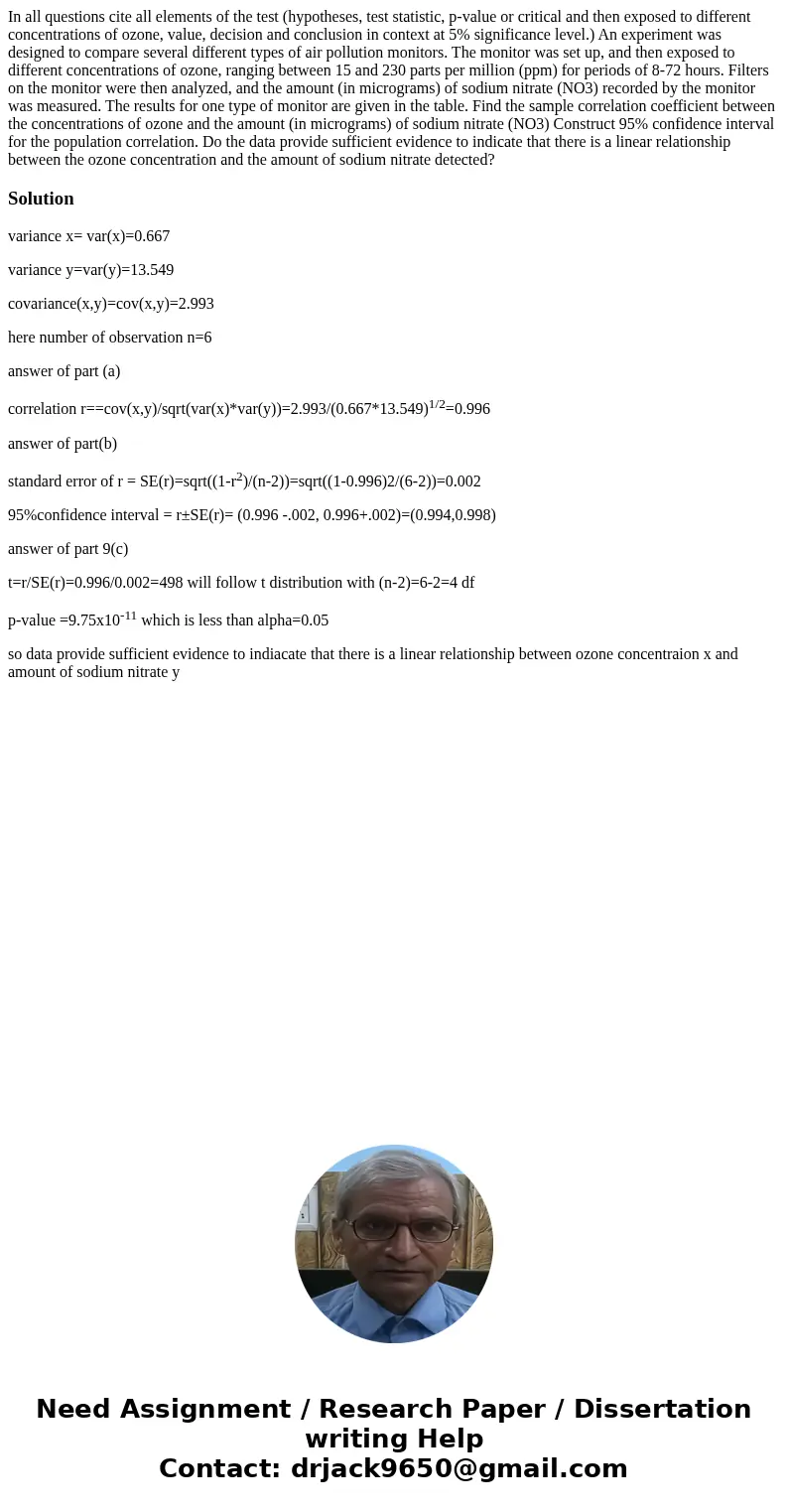In all questions cite all elements of the test hypotheses te
In all questions cite all elements of the test (hypotheses, test statistic, p-value or critical and then exposed to different concentrations of ozone, value, decision and conclusion in context at 5% significance level.) An experiment was designed to compare several different types of air pollution monitors. The monitor was set up, and then exposed to different concentrations of ozone, ranging between 15 and 230 parts per million (ppm) for periods of 8-72 hours. Filters on the monitor were then analyzed, and the amount (in micrograms) of sodium nitrate (NO3) recorded by the monitor was measured. The results for one type of monitor are given in the table. Find the sample correlation coefficient between the concentrations of ozone and the amount (in micrograms) of sodium nitrate (NO3) Construct 95% confidence interval for the population correlation. Do the data provide sufficient evidence to indicate that there is a linear relationship between the ozone concentration and the amount of sodium nitrate detected?
Solution
variance x= var(x)=0.667
variance y=var(y)=13.549
covariance(x,y)=cov(x,y)=2.993
here number of observation n=6
answer of part (a)
correlation r==cov(x,y)/sqrt(var(x)*var(y))=2.993/(0.667*13.549)1/2=0.996
answer of part(b)
standard error of r = SE(r)=sqrt((1-r2)/(n-2))=sqrt((1-0.996)2/(6-2))=0.002
95%confidence interval = r±SE(r)= (0.996 -.002, 0.996+.002)=(0.994,0.998)
answer of part 9(c)
t=r/SE(r)=0.996/0.002=498 will follow t distribution with (n-2)=6-2=4 df
p-value =9.75x10-11 which is less than alpha=0.05
so data provide sufficient evidence to indiacate that there is a linear relationship between ozone concentraion x and amount of sodium nitrate y

 Homework Sourse
Homework Sourse